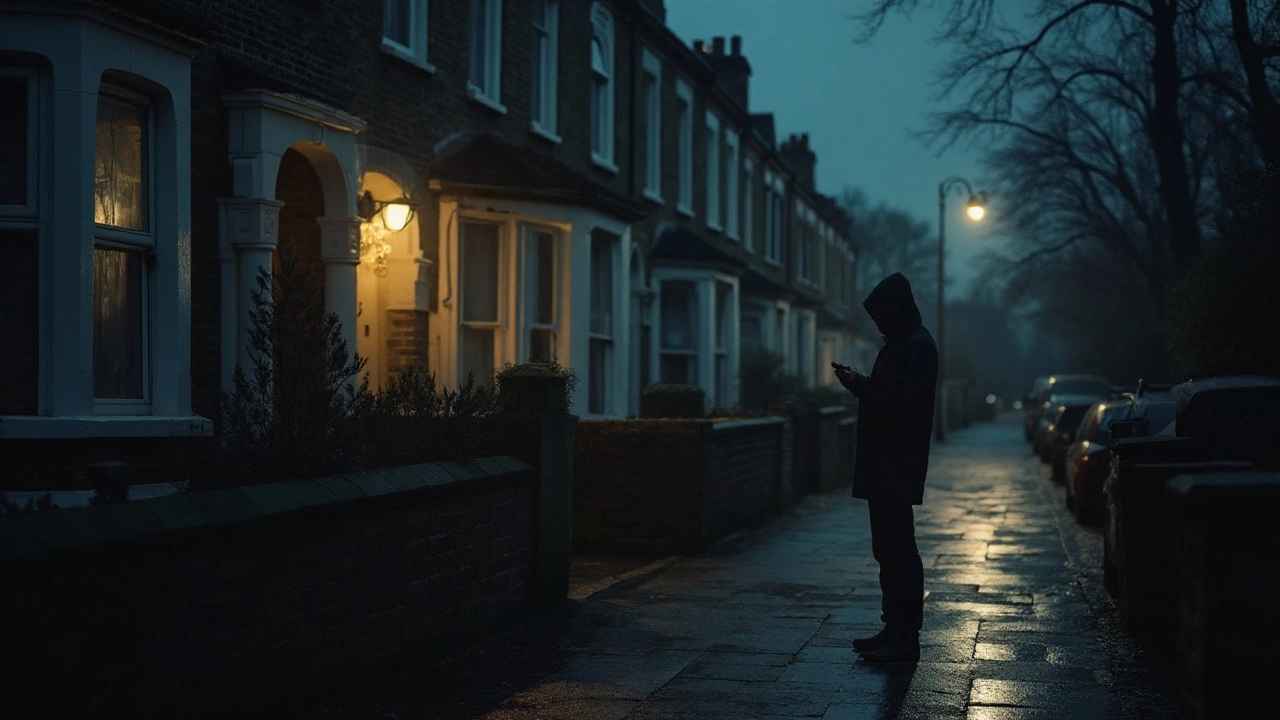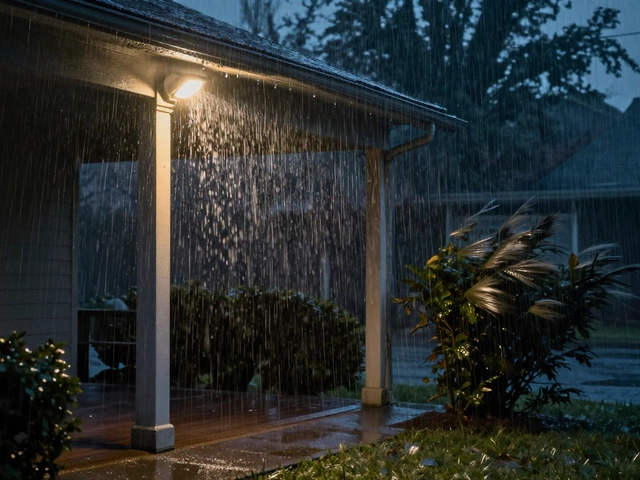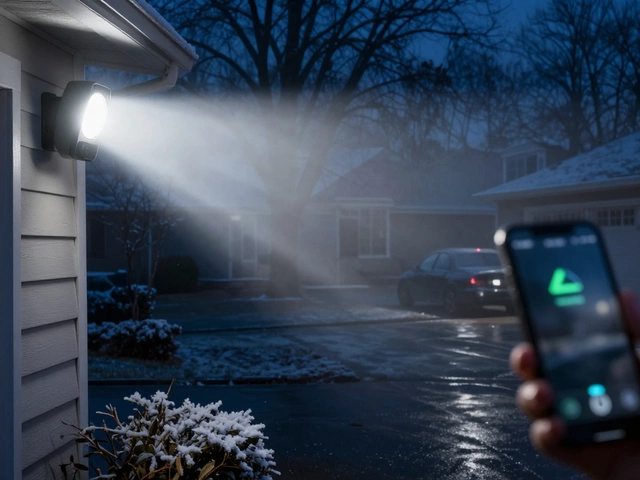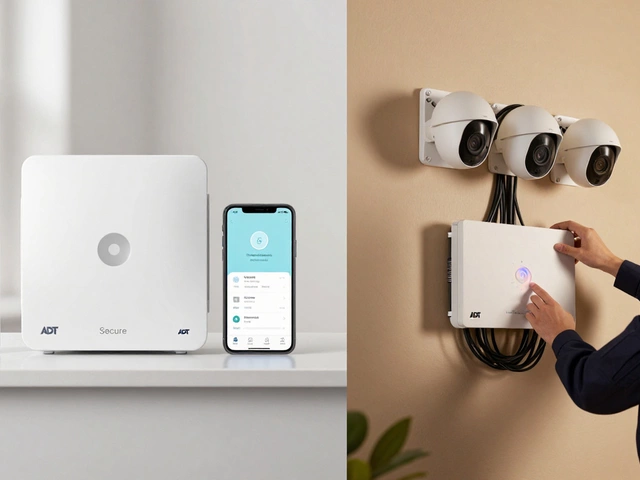First off, here’s something that might twist your brain a little: burglars aren’t always scared off when they see a Ring doorbell on your porch. For plenty of folks, these shiny little cameras scream security. For a clever burglar, though, they’re more like blinking neon signs saying: “This house has smart tech. Want to see what’s inside?” In Wellington, just last year, a police report casually mentioned doorbell footage ended up more useful for the criminals than the homeowners. Now, let’s pull back the curtain and see what’s really going on when these doorbells hit your front step.
The Double-Edged Sword: Making Homes a Bigger Target?
The Ring doorbell is supposed to scare off burglars, right? Not always. Here’s a weird truth: tech-savvy thieves see a Ring as a badge. They know there's probably more tech inside—laptops, phones, smart TVs. It’s like a store window with the best gadgets on display. A lot of burglars today aren’t the bumbling types from old movies. They’re sharp, patient, and sometimes even aware of the model you’re using.
Take the story of my neighbor (let’s call her Jess). She upgraded to a Ring doorbell after seeing someone lurking in her driveway. The next week, her house was broken into while she was out. The catch? The burglar covered his face, but also rang the bell to see if anyone was home—he got her voice on the two-way audio, chatted for a second, and then waited until he was sure the house was empty. That’s not a one-off thing. In 2024, Christchurch police saw a 9% uptick in burglaries at homes with visible smart doorbells.
So why does this happen? For starters, burglars love reliable routines. They’ll use your doorbell to check if you answer—either in person, on your phone app, or not at all. Someone always answering immediately? House might be occupied. A delay or a stock reply? Golden ticket, someone’s remote, probably at work. They watch, they listen. The doorbell helps them, in a way, profile your schedule. And unlike a static security camera, doorbells record who’s coming and going. If you’re always out Mondays at 8, the Ring catches it—and so do determined crooks.
Stats show about 41% of New Zealand’s reported home burglaries in 2024 involved wi-fi enabled security devices, mostly because the gadgets were working as planned — but the humans using them, not so much. Turns out, most burglars don’t mind the camera. They just wear a hoodie, keep their heads down, or even dismantle the device with a screwdriver if they’re really confident.
Ring doorbell setups also tempt burglars who know how many folks fall for “notification fatigue.” You get five motion alerts a day from a neighbor’s cat, your mailman, or even the wind. That notification ping? Most people snooze it or ignore it after a month. Burglars count on that distraction. They might trigger the bell over and over to make you stop paying attention when it’s real.
And about stealing the actual device—yep, that’s a thing too. Doorbell theft reports in Wellington nearly doubled between 2023 and 2024. Once they take the device, they can sell it, reset it, or just make sure you’re not recording their main act.
| Year | Burglaries Involving Smart Doorbells in NZ (%) | Visible Doorbell Theft Incidents |
|---|---|---|
| 2023 | 33% | 47 |
| 2024 | 41% | 95 |
That table? Real numbers grabbed from last year’s NZ Police Statistics digest. Shows that Ring doorbells are cropping up in crime scenes more often than most folks would guess.
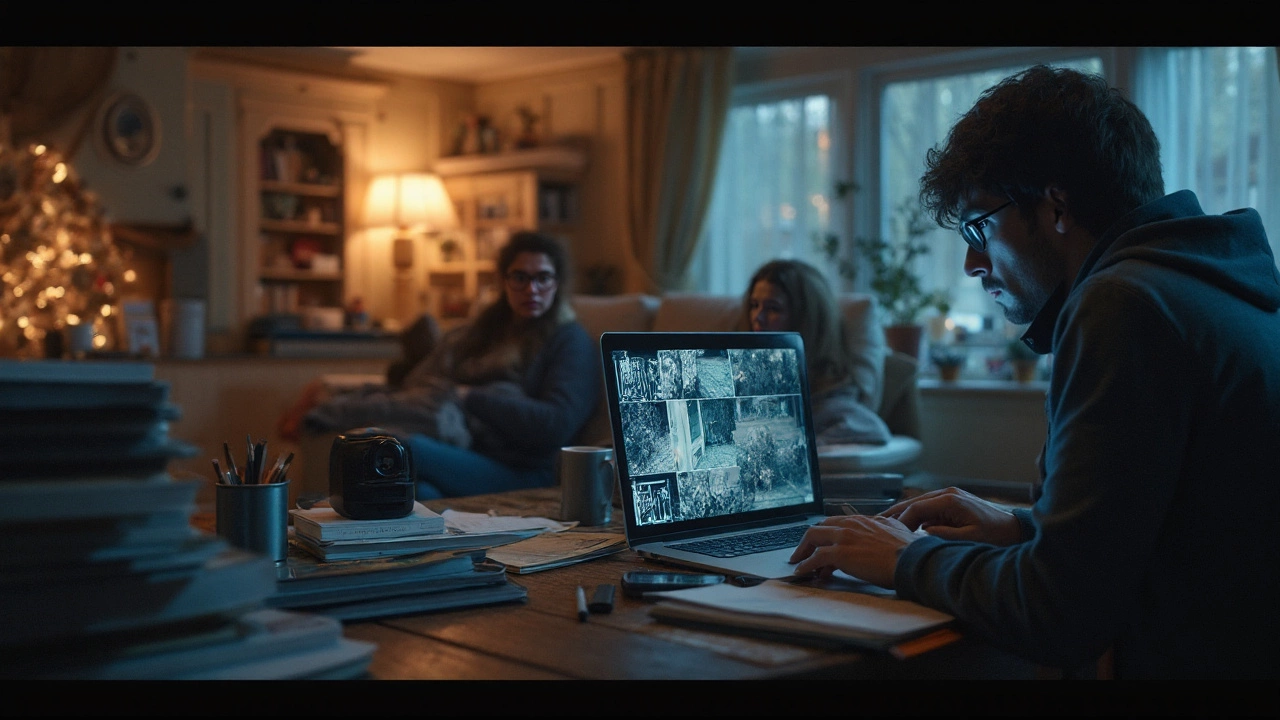
Burglar Tricks: Outsmarting the Smart Doorbell
Let’s get into what these crooks actually do. We picture them shying away from high-tech gadgets, right? More like the opposite. There are YouTube channels, dark web forums, you name it—where burglars swap tips on beating video doorbells. Some cheats are annoyingly simple. A hoodie and a mask can defeat most doorbell cams, since these only capture a narrow field right at the door.
More determined crooks will jam your Wi-Fi signal with something as cheap as $20 from an electronics shop. No Wi-Fi? Your doorbell goes dumb. Or they’ll use blind spots—lots of doorbells don’t see well at an angle, and wide-brimmed hats or even umbrellas block faces. A few tech-heads even spoof the camera by redirecting their phone’s Bluetooth or radio signal, confusing the device into thinking it’s offline. That’s rarer, but it’s happened in Auckland in late 2024, according to local police briefings.
Another favorite move: ringing the bell, talking to the owner, and raiding the backyard or side entrance while you’re busy watching your front step from your screen. Or they’ll leave a fake flyer or package to block the lens, then come back later. A Wellington police report in April 2025 listed “lens-blinding” as one of the most common tactics.
Then there’s hacking. Not as common as Hollywood would have you believe, but not impossible either, especially if you’ve never updated your firmware. A weak password? Burglars can access your footage, see when you’re home, grab files, and—if they’re really into it—use old recordings to check out your routine.
Don’t forget physical sabotage. A good yank or a quick twist of the mounting bracket, and your fancy video doorbell is gone. In one Wellington suburb, a group targeted fifty homes in a single weekend, grabbing doorbells and selling them online for a tidy profit. One local repair tech, Mike (yes, I’m using a real guy here; he fixed ours after a minor “pavlova delivery” mishap), said he’s seeing more retirement villages and family homes coming in with snapped-off mounts and torn wires than actual camera failures.
Poor lighting is another factor. Yeah, those commercials all show a bright, lit front step. In real life? Most Ring doorbells struggle at night or when it’s raining sideways, which, if you know Wellington, is about every week. Grainy video isn’t much help unless you plan on memorizing the outline of every hoodie that walks by.
Burglaries also spike during holidays. Why? Because your social media is probably full of beach pics or shots of you and your mates at a rugby test in Auckland. The more you show the world you’re gone, the more confidence crooks have. They can see your Ring at the door, check if you answer, and—if you don’t—they might take that risk.
The harsh truth is, criminals adapt fast. Doorbells made things tricky for a few months, but now they’re part of the calculation. They factor in your device, check for redundancy (like backup cams or alarms), and decide if your home’s worth it. You might spot them acting suspiciously in your recorded footage later, but by then, it’s too late.

How to Outsmart the Burglars and Make Your Doorbell Work For You
So, what do you actually do? Do you rip the doorbell off the wall and toss it in the bin? Might be a dramatic move, but not the best one. Like with most things, knowledge is your real weapon. Start with smart placement. Too many folks put their Ring way too low, or under a dark overhang where it’s basically useless. Mount it at chest height, with a clear line of sight, and keep foliage and decorations away from the lens.
Pair it with backup. One camera at the door means nothing if the side gate is wide open. Add at least a cheap camera pointing down the driveway or garage. Some local security shops (like that place on Cuba Street) do decent deals on bundles, and set them up in under an hour. Remember: redundancy isn’t overkill; it’s security.
Update your device, always. Manufacturers release firmware updates for a reason, usually to patch new vulnerabilities. And for the love of bacon and eggs, change your password. Don’t let the default login linger. Make it random—or, as my wife Olivia would say, make it “uncrackable even if your teenager tries.” Use at least 12 characters, a mix of caps, numbers, and symbols.
Lighting changes everything. No, really. Swap out that ancient yellow porch bulb for a bright LED with a sensor. Even cheap Bunnings motion lights can deter a burglar who thought your porch was a soft spot. Layered security is the name of the game. Don’t skimp on it.
- Set different alert tones for movement, doorbell, and sound. That way, you don’t tune out the beep that matters.
- Review your notification settings every couple of months; you’ll spot patterns or false alarms.
- Use fake-out routines like setting up a smart speaker to play random dog barks or talking at certain hours. Burglars hate unpredictable noise.
- Invest in signage. Even a simple “Smile, you’re on camera!” sticker works better than nothing.
- Talk to your neighbors. If they know when you’re away, they’ll spot suspicious activity faster than any app.
- Don’t post holiday plans or daily schedules online. Seriously, that’s still the quickest way to advertise an empty home.
- If you’re expecting a long stretch away, have someone collect your mail and pop in at random times; burglars often stake out more than just your doorbell camera.
- Use devices with local storage. Cloud footage is handy until Wi-Fi drops out, then you have nothing.
- Consider a reinforced mount or anti-theft bracket for your doorbell. Cheap online, worth every cent.
- Find out if your doorbell lets you share alerts instantly with neighbors or community watch groups; it can help catch crooks faster.
None of this means Ring doorbells are a waste. Far from it. They catch package thieves, warn you about weird callers, and give you peace of mind. But relying on one device, no matter how “smart” it claims to be, is asking for trouble. Real security means layers, backup plans, and a little bit of street smarts. It means learning how criminals think—then throwing a few wrenches into their routines.
You might actually sleep better knowing you’re not just living with a Ring doorbell, but using it smartly, with a bit of old-school common sense mixed in. At the end of the day, a burglar’s favorite house isn’t just one with a Ring—it’s one where the owner trusted it to do everything for them. Don’t be that person, and you’ll stay one step ahead.

